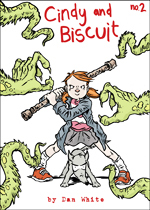The YELLOW EYE rides the wind
August 26th, 2008
 Written by G. Willow Wilson
Written by G. Willow Wilson
Drawn by M.K. Perker
Published by Vertigo
The Yellow Eye comes to G. Willow Wilson entirely fresh, having not read Cairo or any of her other work, which in one way is liberating, in that I have no preconceived notions about her output, and in another is limiting, in that some context can be an aid to critical thinking. Fortunately Air is nothing if not a generous text – there’s a lot here that’s immediately recognisable. The well worn plot holds very little in the way of surprises – a larger world, complete with conflicts in need of resolution, opens up when a mysterious stranger comes to town. What is unusual however, and, judging by the title of the book, what the Vertigo Willow axis think gives the book a distinct identity, is the setting: planes, airports, departure lounges, the sky.
These spaces are of course more than simply locations, when we get past all the flight delays and airport bureaucracy, each carries with it the promise of travel, change and possibility. J.G. Ballard, in his wonderful essay on airports, puts forward the idea that they’re not really locations in the traditional sense at all, their defining features being their liminal status, their unfetteredness. Not one place and not the other, but open to the possibilities of any and all places. By inhabiting these spaces we get to experience ourselves as unfettered, and consequently open to any and all possibility. Hopelessly romantic, well sure, but if we’re honest most of us have had that experience of staring at a flight information screen and feeling that anything could happen, the flight numbers listing a thousand different worlds, a thousand different people who look just like the person we see in the mirror.
Judging by this first issue I’d say Willow is trying to tap into this line of thinking. Before the locations, we have the title, “Air”, something all encompassing, unbounded, and ungrounded. Then we have the enigmatic Zayn and his numerous identities, who hails from everywhere and nowhere and tastes “of the sky”. The dull protagonist, Blythe – a bored, acrophobic flight attendant – can be read as having a role to play here – her stock heroic arc in which she discovers personal potential that she never new existed, in some way mirroring the idea of travel as a doorway to possibility, to the different yous mentioned above. Even the hackneyed conspiracy components play up the notion of worlds within worlds. Reaching? Maybe, but it’s worth pointing out that by the end of the issue Blythe has in her hands a postcard a country that doesn’t exist. Even imaginary borders are up for grabs, it seems. It’s possible to move off the map.
Then there’s the antagonists, the Etesian Front. A clandestine organisation dedicated to taking the War on Terror into their own hands. On paper a rather shaky concept, and one that doesn’t work particularly well (i.e. at all) within the pages of the comic, although their inclusion may well point towards Willow’s political and philosophical intentions for the book. Afterall, the Etesian world view is inherently partial, limited, and definite, this works as a counterpoint to the openness and liminality suggested by the context, Zayn’s very existence, and Blythe’s arc. By setting these two elements up in opposition, and putting the protagonist and her love interest (Zayn) on the ethereal side of the conflict, it would seem that we are being asked to disapprove of the Etesian’s and all they stand for. The implications for Willow’s political thrust are on one level obvious and straightforward – this isn’t a writer who’s very keen on Bush’s ill-defined war – on another she is perhaps suggesting that any sort of limiting perspective is problematic. Certainly our parochial and stifling ideas about other nations and peoples look ripe for a kicking. This is all potentially very interesting stuff.
Trouble is Air just isn’t that great in the telling. As I’ve already stated, the plot is obvious and tired, the protagonist barely registers, and the villains are absurd in all the wrong ways. None of which is helped by some awkward and highly fanciful dialogue (see the “taste like the sky” line mentioned above) and what many will consider to be muddy, ugly art – exactly the kind of art a book called Air could do without. Personally, I feel that while Perker would probably be better suited to any title currently being drawn by Chris Weston, the minimal inking and minimal colour palette do serve to ameliorate any problems on the pencils front. In fact looking at the book for a third time I’m struck by the amount of background detail Perker manages to throw in and still serve up a book with something approaching a light, airy aesthetic. But of course art that isn’t as bad as it could have been won’t save the book, and neither will conceptual and aesthetic novelty, what’s needed is a plot that makes good on the book’s strengths and some genuine, old fashioned attention to characterisation and the words that come of the character’s squiggly little mouths. As the critic pointed out on CBR, the Gaiman quote on the front cover that suggests a prescription of six issues doesn’t bode well for the monthly reading experience. Time will tell whether we have another story that would have worked better as a graphic novel on our hands.
![]()




Leave a Reply
You must be logged in to post a comment.